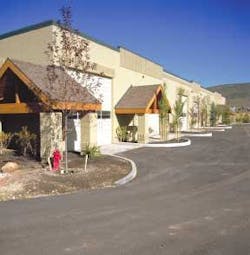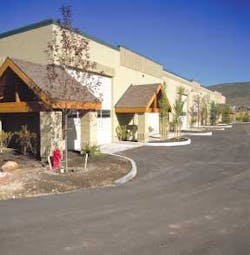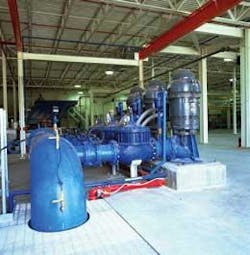Limited Space Provides Opportunity for Microfiltration Plant
By Jamie Lawrence
The snowcapped peaks of the Wasatch Range provide both scenery and life-giving moisture for the thirsty desert communities of the Salt Lake Valley. Runoff from the mountains' snowfall has turned acres of scrubland into large-scale agricultural operations, and helped Salt Lake City become one of the West's fastest growing metropolitan areas.
But successive years of below-average snowfall and above-average development have thrown the region into a five-year drought. In the face of water shortages, Summit Water Distribution Company, a private mutual utility serving much of the alpine Park City area, has turned to the latest in high-tech water treatment technology to treat a higher volume of drinking water at reduced cost, all while exceeding current EPA standards.
Summit's East Canyon Water Treatment Plant is one of the first facilities in Utah to use membrane filtration, a process that has proven more effective than conventional systems in meeting increasingly strict EPA requirements for removing microorganisms such as cryptosporidium and giardia from the water, allowing utilities to treat and deliver more potable water, a significant advantage in an area facing critical water shortages.
"Membrane technology is actually a family of processes that offers several degrees of filtration based on the volume of water being treated and the utility's treatment goals," said Stan Postma, PE, Carter & Burgess's Salt Lake City office manager and project director. "The East Canyon plant uses low-pressure microfiltration, a system of immersed modules of hollow fibers that trap particulate matter and other contaminants. This approach removes particles as small as .01 microns – the size of most bacteria."
The treatment plant, for which Carter & Burgess provided survey, construction management and inspection services, has the capacity to treat up to 5.5 mgd drawn from East Canyon Creek in the Jeremy Ranch area. While the facility currently serves only a few thousand customers, its flexible design permits future expansion up to 22 mgd as needs dictate by bringing on a second source, East Canyon Reservoir. Through the closely coordinated design and construction effort, Carter & Burgess accelerated the project's schedule, resulting in on-time, under-budget completion.
In addition, the new East Canyon system is less prone to breaches while increasing treatment efficiency.
"Typically, waste resulting from membrane treatment is approximately 10 percent of the total production volume," Postma said. "In the East Canyon plant, however, our system has minimized the waste to as little as 2 percent."
Unlike conventional treatment systems that simply discharge backwash waste back into the ecosystem, the East Canyon facility recycles and filters the backwash to produce the same quality drinking water as the primary treatment process.
"All residual wastes are sent to the local water reclamation district, " Postma said. "Despite this rather complex process, the amount of backwash requiring treatment is less than that generated by a conventional system."
Another advantage of the East Canyon facility is its ability to treat this high volume of water in a much smaller space, an important consideration in a rugged area that has seen a lot of development and offers little in the way of prime building sites.
"We like to think of East Canyon as a 'stealth' treatment plant because of the economy of space, and because it has very low visual and environmental impact," Postma said. "Because aesthetics are also important to the community, we buried the building into the hillside, which also minimized disturbance of surrounding wetlands. There are also no tanks or equipment located outside the plant building."
While the East Canyon Water Treatment Plant represents the latest take on what's proving to be a highly versatile treatment process, Postma is quick to acknowledge that while high-tech treatment approaches may well offer innumerable benefits to communities of all sizes, they are by no means a one-size-fits-all solution.
"For example, most new systems have more automated functions than conventional methods, reducing the number of operations and maintenance personnel required to keep the system running," he said. "However, the highly complex nature of these technologies requires that operators have more education and a better understanding of instrumentation."
And adding a "new" treatment process doesn't necessarily make old technologies obsolete.
"In some cases, a utility may be able expand its capacity and meet purity standards by integrating microfiltration with the existing treatment system," Postma said. "Then there's the fact that not every water source of drinking water has bacteria problems, and as such, do not require the 'latest and greatest' treatment technology. Often, the solution can simply be optimizing the existing treatment system and applying other additives such as fluoride."
At a time when conservation of our water supplies has never been more essential, the scope and depth of technology-based solutions offers hope for the future.
"Summit's challenge is no different from that faced by most other water utilities," Postma says. "Each has its own unique circumstances, costs and opportunities. The East Canyon project demonstrates that a willingness to examine new and innovative approaches can lead to one or more viable solutions, which in turn enhances our knowledge of what can be done to ensure safe, reliable and affordable drinking water to all citizens."
About the Author:
Jamie Lawrence is the content developer in the Electronic Media Group of Carter & Burgess, Inc.


